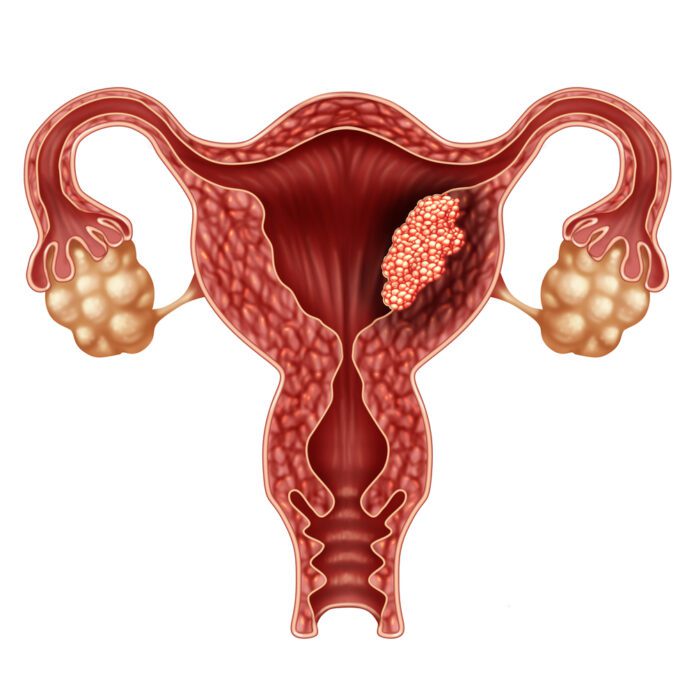Overview Of Endometrial Cancer
Endometrial Cancer is cancer that starts in the endometrium, the lining of the uterus (womb).
Commonly Associated With
Endometrial adenocarcinoma; Uterine adenocarcinoma; Uterine cancer; Adenocarcinoma – endometrium; Adenocarcinoma – uterus; Cancer – uterine; Cancer – endometrial; Uterine corpus cancer
Causes Of Endometrial Cancer
Endometrial cancer is the most common type of uterine cancer. The exact cause of endometrial cancer is not known. An increased level of estrogen hormone may play a role. This stimulates the buildup of the lining of the uterus. This can lead to abnormal overgrowth of the endometrium and cancer.
Most cases of endometrial cancer occur between the ages of 60 and 70. A few cases may occur before age 40.
The following factors related to your hormones increase your risk for endometrial cancer:
- Estrogen replacement therapy without the use of progesterone
- History of endometrial polyps
- Infrequent periods
- Never being pregnant
- Obesity
- Diabetes
- Polycystic ovary syndrome (PCOS)
- Starting menstruation at an early age (before age 12)
- Starting menopause after age 50
- Tamoxifen, a drug used for breast cancer treatment
- Women with the following conditions also seem to be at a higher risk for endometrial cancer:
- Colon or breast cancer
- Gallbladder disease
- High blood pressure
Symptoms Of Endometrial Cancer
Symptoms of endometrial cancer include:
Abnormal bleeding from the vagina, including bleeding between periods or spotting/bleeding after menopause
Extremely long, heavy, or frequent episodes of vaginal bleeding after age 40
Lower abdominal pain or pelvic cramping
Exams & Tests
During the early stages of the disease, a pelvic exam is often normal.
In advanced stages, there may be changes in the size, shape, or feel of the uterus or surrounding structures.
Pap smear (may raise a suspicion for endometrial cancer, but does not diagnose it)
Based on your symptoms and other findings, other tests may be needed. Some can be done in your health care provider’s office. Others may be done at a hospital or surgical center:
- Endometrial biopsy: Using a small or thin catheter (tube), the tissue is taken from the lining of the uterus (endometrium). The cells are examined under a microscope to see if any appear to be abnormal or cancerous.
- Hysteroscopy: A thin telescope-like device is inserted through the vagina and the opening of the cervix. It lets the provider view the inside of the uterus.
- Ultrasound: Sound waves are used to make a picture of the pelvic organs. The ultrasound may be performed abdominally or vaginally. An ultrasound can determine if the lining of the uterus appears abnormal or thickened.
- Sonohysterography: Fluid is placed in the uterus through a thin tube, while vaginal ultrasound images are made of the uterus. This procedure can be done to determine the presence of any abnormal uterine mass that may be an indication of cancer.
- Magnetic resonance imaging (MRI): In this imaging test, powerful magnets are used to create images of internal organs.
- If cancer is found, imaging tests may be done to see if cancer has spread to other parts of the body. This is called staging.
Stages of endometrial cancer are:
- Stage 1: The cancer is only in the uterus.
- Stage 2: The cancer is in the uterus and cervix.
- Stage 3: Cancer has spread outside of the uterus, but not beyond the true pelvis area. Cancer may involve the lymph nodes in the pelvis or near the aorta (the major artery in the abdomen).
- Stage 4: Cancer has spread to the inner surface of the bowel, bladder, abdomen, or other organs.
Cancer is also described as grade 1, 2, or 3. Grade 1 is the least aggressive, and grade 3 is the most aggressive. Aggressive means that cancer grows and spreads quickly.
Treatment Of Endometrial Cancer
Treatment options include:
- Surgery
- Radiation therapy
- Chemotherapy
- Surgery to remove the uterus (hysterectomy) may be done in women with early-stage 1 cancer. The doctor may also remove the tubes and ovaries.
- Surgery combined with radiation therapy is another treatment option. It is often used for women with:
- Stage 1 disease that has a high chance of returning, has spread to the lymph nodes or is a grade 2 or 3
- Stage 2 disease
- Chemotherapy or hormonal therapy may be considered in some cases, most often for those with stage 3 and 4 diseases.



